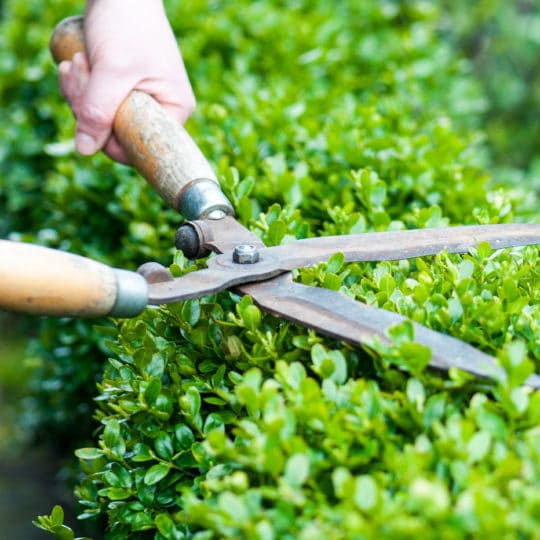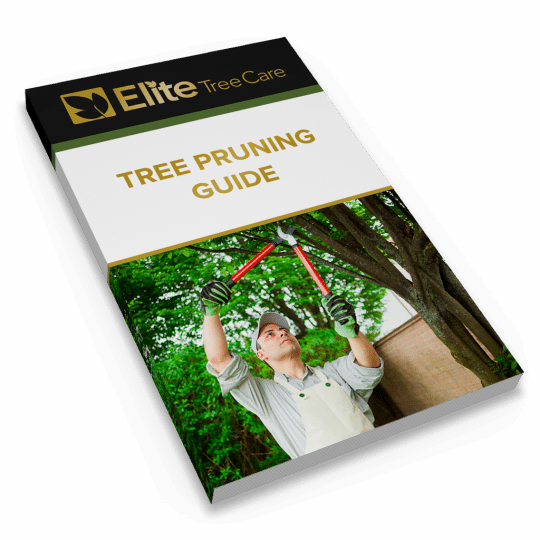Selecting the Right Tree Pruning Tool
To Get the Job Done Right
Posted
May 11, 2023

Say you have an important task to do. If there was a tool designed to help you tackle this task, would you take it? What if there was more than one tool, how do you choose? Mastering tree pruning tool selection not only helps you get the job done efficiently, but it can also mean the difference between a healthy tree and one open to disease. Here are some tips on how to choose the right tool for the job.
Tree Pruning Tool Selection
If you’ve been to the garden center lately or done any research online, you may have found there are quite a few tree pruning tools available. Here are some of the basics categories:
- Pruning shears. These short shears feature a handheld design similar to scissors. The shorter blades are designed to cut through thin branches only a few inches thick.
- Loppers. Features longer handles that require the use of both hands to cut through slightly thicker and taller branches.
- Pole Pruners. Reach even higher branches with this tool that may feature a telescoping pole or the ability to connect several poles together. The blades are situated at the top of the pole and a thin rope is used to assist in cutting the branch. While the average height is eight feet, some can reach branches as high as 30 feet.
- Hand Saw. For branches up to five inches thick, you’ll need something with more push and pull power. Hand saws come in handy for many DIY projects, including tree pruning. Some even fold for safe and easy storage.
- Chainsaw. If the branch or limb is larger than five inches, you’ll need even more pruning power. There are electric or gas-powered engines and models with cutting bars from six to 20 inches long. The size of the bar depends on the size of the branch. For instance, if you want to cut a limb that’s about 10 inches in diameter, go for at least a 12-inch chainsaw to be safe.
Types of Shears
Now that you know the basics, let’s get a little more detailed. There are several different types of shears that also affect the way they are used.
- Bypass shears. Like scissors, one sharp curved blade bypasses a blunt curved blade to make a cut.
- Anvil shears. A sharp, straight blade closes onto a flat, dull edge. A word of caution: these shears are known to crush a branch rather than make a clean cut. This makes them better suited for cutting deadwood instead of live plants.
- Ratchet pruning shears. Works by squeezing and releasing the handle. They can cut through thick branches and are often used by those with limited wrist strength.
Shears also come in many different colors, styles, and sizes. The best way to pick one is something you feel comfortable handling and using over time. If it’s too large, heavy, or you can’t operate it easily, it’s not the tool for you.
Tree Pruning Tips
Now that you have the right tool for the job, here are some other tips to keep in mind.
- Keep the blades sharp. Dull blades can rip or tear the branch, leaving an unsightly stump and opening your plant up to disease. A sharp blade makes a clean cut that can heal faster.
- Cut at an angle. Angle the cut away from the plant so that any moisture runs off away from the trunk. Water may pool on straight cuts, allowing fungus to grow.
- Pick a dry day. Obviously you don’t want to prune in the rain. But it’s also important that fresh cuts stay dry so fungus doesn’t start to grow.
- Heads up. If you’re pruning over your head with a looper or pole pruner, don’t stand directly under the branch you’re cutting. You may want a spotter present or someone who can use a grab pole to help lower the branch to the ground.
- Dress appropriately. Gloves and goggles are a good choice for any type of gardening activity. If you’re using a powerful chainsaw, you’ll also want to consider hearing protection, chaps, and closed-toe shoes.
- Clean the blades before storing. Wipe the blades down and make sure they’re dry before you put them away for the day.
- Call for help. Whether you need more advice on the right tool or need assistance tackling a tough pruning job, contact a professional tree pruning company for help. They already come with the proper tool in mind and expertise on how to get the job done efficiently.
While tree pruning may feel like a chore, choosing the right tool for the job can make it a much easier process. For more tool tips and tree pruning information, contact Elite Tree Care for expert advice.

Download Your FREE Tree Pruning Guide
Learn how, when, and how much to trim or prune your trees to maximize their health and beauty. This guide covers the factors that go into tree trimming (pruning) and will help you make a more informed decision about hiring a professional tree service.